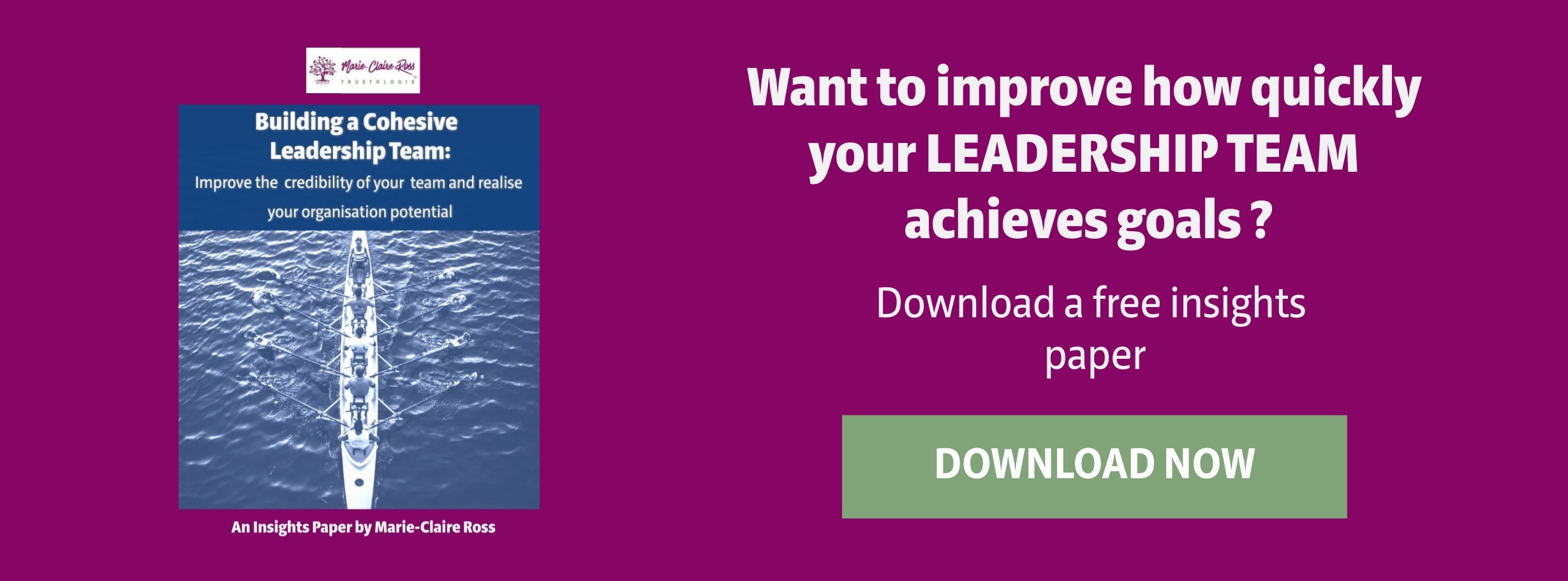
Around the world, there’s growing discontent about the ineffectiveness of employee engagement surveys. Over the last fifteen years, employee engagement levels have...
When it comes to helping companies build trust internally, one of the things I learnt pretty quickly is that if 1-2 members of the executive team do not support any initiatives to improve trust then all subsequent efforts will fail.
Leaders are the channel for an organisation’s purpose and values. If leaders fail to connect to them, they can hardly connect others to it. It’s the same with trust. If leaders don’t believe in building trust or changing their behaviours, then they will fail to put the right effort behind it. Such inauthenticity immediately fuels further distrust with employees.
Growing a high-trust culture is more than just flinging the word “trust” into your corporate values or mission statement and hoping it will stick. The un-sticking point is that trust means different things to different people. When I ask a group of executives what they believe trust means, I often receive responses ranging from “personal freedom”, “right intent”, “personal safety” right through to “a bubble or an environment that employees don’t want to break.” These answers are right for some and wrong for others. You can’t build trust if you don’t have a reference point for what it means to the organisation as a whole.
In organisations where trust is high, people are talking about it. They have a trust framework that forms a common language on the dimensions of trust. This helps individuals and teams understand, discuss and practise trust with one another. It means employees have the language to call people out on behaviours that are destroying trust.
It all starts with leaders who are intentional about building trust. In a high-trust collective, you will find leaders who are trustworthy and who have a concept of what it means to act with trust. They also expect this behaviour from others, ensuring that trust cascades throughout the organisation. Over time, it eventually becomes embedded within the company.
More importantly, it begins with leaders who are willing to build trust with each person in their executive team. After all, executives lead by example and set the cultural tone with their behaviours. If executives can’t trust each other, then any efforts to tell employees that they want to build trust will be ignored.
Building a high trust culture is a journey. It really begins with leaders understanding themselves and those around them much better. The result is they know what actions positively and negatively impact their workplaces.
The ideal time to do this is when you have a new executive team member or it is determined that the team need to operate differently, in order to achieve the new strategic direction.
One of the first steps to building trust within your organisation involves sitting down with your executive team and having a frank discussion about how much trust is required for the organisation to succeed. Except the trick is you don't say "Hey, we need to talk about trust." Such a discussion will get people's backs up. Instead, it works best to use an external facilitator with no emotional baggage to run these sessions and who can create a safe space for people to speak up about issues. An example of what we use is our proprietary SUCCEED Together® assessment and workshops. This breaks down trust into six easily identifiable trust drivers to help leaders identify and understand trust issues so they can talk about it more effectively.
Once it is determined that change is necessary and executives want to trust each other more, then it’s time to ensure that every executive is on board. Put your money where your mouth is and put your commitment to each other in writing and sign it off. Social psychology studies have found that people are more likely to change their behaviours if they have agreed to it publicly.
This involves producing a “team expectations” document to outline what is expected of each team member in terms of their behaviours, expectations and attitudes, in relation to building trust with each other and the organisation as a whole. This creates an environment that I call TRUSTED TO THRIVE.
According to the book, The Speed of Trust by Stephen M. R. Covey, in every interaction – explicitly or implicitly, understood or not, there are expectations. And the degree to which these expectations are met or violated affects trust. In order to achieve results, you need to make sure that everyone is clear on what needs to be achieved and the related expectations. Doing this at the outset stops a lot of potential problems.
Creating your expectations requires a bit of planning, but the idea is to produce a handful of expectations to run with that everyone understands and agrees upon. Here are five techniques to get you started:
It is common management wisdom that leaders need to walk the talk. This oft-cited jargon is easy to say, but hard to do in practice. Get all of your executives to review your core values. Talk about what behaviours the organisation requires to be successful. How often are leaders modelling your core values to employees? Discuss what core values are required for executives to model to each other. Set the expectations quite clearly and get leaders to review their own personal values. Personal values drive commitment and those who are clear on their own values are better at promoting an organisation’s values. By openly discussing the high standards of behaviours and performance – what it looks like and what it isn’t – avoids future personal discomfort when having to pull up an exec on the team for inappropriate behaviours.
In addition to your core values, what trust behaviours are required? Often, CEOs will say to their team. “do we trust each other?” But this isn’t the way to do it. You need to get more specific. You need to reverse engineer your behaviours based on your vision for the future and how people need to behave and interact to reach the vision. This can be as basic as sharing information, right through to being on time, listening to others and providing support. Each organisation and team are different. Dig deep and work out the 5-7 trust behaviours that mean the most to your team and the organisations as a whole with regard to building a high trust culture. Tie them into your core purpose and values.
According to research by Joseph Grenny, the approximate health of a team or organisation can be measured by how quickly problems get solved. The important principle behind this is that being clear on expectations reduces the lag time between identifying and discussing problems. The faster problems get solved, the more it enhances relationships. Together with your core values, this work is all about aligning both behaviours and thinking that make the organisation and executive team great. While setting clear expectations lets people know up front what is required and what is expected so that they can hold each other accountable. For example, “In these executive team meetings, it is expected that you share information, listen to each other and speak up if you don’t agree on anything. Only leave the room if you can accept a new decision and promote it to your team.”
You can’t satisfy everyone’s interests at the same time. One of the issues I commonly see in a low-trust executive team is when some team members don’t agree on a decision. Rather than express their opinion and get to a stage where everyone accepts the verdict, they leave the meeting frustrated and paying lip service to the initiative. They then fail to get their direct reports to embrace the new direction, so that the initiative either fails or stalls in their department. Other executives get frustrated at them for their inability to positively influence their team on the new decision.
You’re probably thinking that’s not unusual and that corporate executive teams are known for their inability to collaborate and act as glorified ‘yes’ men and women to the CEO. And you would be right (see How a Fear of Speaking Up Derails Strategic Thinking).
Humans are designed to avoid conflict. Leaders fear speaking up about issues in case it makes them look stupid or unpopular.
But let’s be clear about one thing. There is nothing wrong with a bit of strife and tension in a team. Healthy debate is what is needed to reduce the tendency towards groupthink and to really flesh out the feasibility of strategic initiatives. It’s a good thing. Without robust discussion, you get mediocre ideas and a lack of commitment.
What’s required is a fair decision-making process where everyone speaks up and says what they feel about the issue. People are more likely to accept a decision they don’t like if they feel they were heard and a fair decision process was used. Create a simple process that everyone agrees on and that is used consistently.
Typically, when executives don’t trust each other it results in each of their departments working as separate silos. Because these units are not talking to each other effectively, it can result in missed deadlines, poor customer service and a lot of frustration.
Having a united culture with a shared purpose, values and goals help employees to connect to the meaning behind their work and their personal impact. But it’s not enough on its own. Social identity theory has found that we are still quite tribal and weigh up whether we can trust members from other departments (tribes) based on a tallying up our similarities and differences.
Where trust often breaks down between departments is where the complexity of misaligned interests is not acknowledged, much less dealt with. The most trusted leaders navigate this territory by carefully thinking in terms of integration and alignment of interests within the overall strategy of the organisation.
This responsibility belongs to the CEO to remove any roadblocks to collaboration and to drive a “one firm” focus that moves people beyond narrow self-interests and commit to common goals. The CEO must constantly reinforce the importance of being part of an organisation beyond geographical, business unit or functional identity.
Of course, teams that get along well together have fun outside work together. Never underestimate the importance of socialising outside of work hours (or inside). If the only communication team members have with each other is task related, it reduces the ability for team members to be resilient during conflict. Create regular socialisation opportunities, such as having dinner together once a month or quarter. Learning together is particularly important.
As social beings, we love making emotional connections with others and being seen for who we are rather than just an agent performing a role.
For new executive teams, it’s important that activities are undertaken that help member share common ground and learn about each other. You know that bonds of trust are being formed when executives feel able to ring each other up to ask questions and share best practices.
Developing trust can be thought of as “the work before the work,” meaning the mutual effort needed to build effective communications and relationships. Without it, tasks get done less efficiently and effectively. Setting expectations around trust that are linked to your core values and purpose make it much easier to align thinking within your team. While it does take some planning, the result is a team that works well together reaching goals and enjoying each other’s company.
If you need help with this, head over to this page to find out our process.
Image credit: Epic Ebike

Around the world, there’s growing discontent about the ineffectiveness of employee engagement surveys. Over the last fifteen years, employee engagement levels have...

Over the last decades, marketers have gradually learnt that selling products by promoting rational features doesn’t work. People buy based on their emotions. Research...